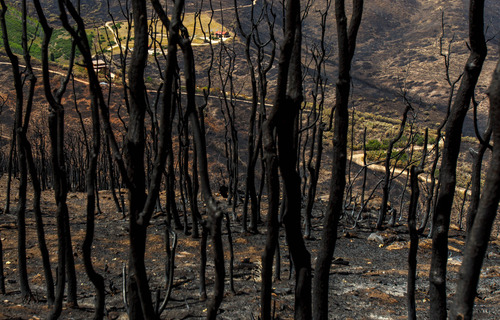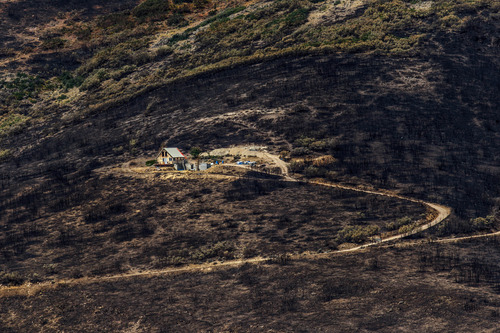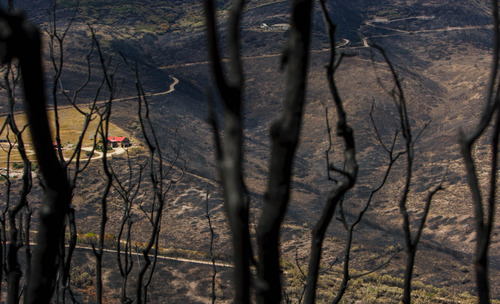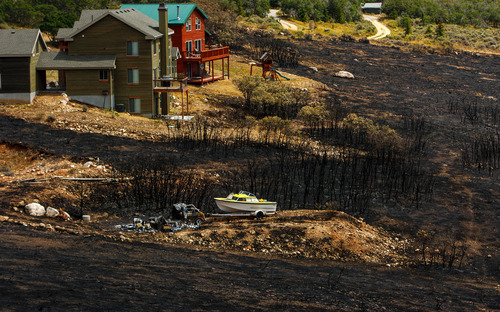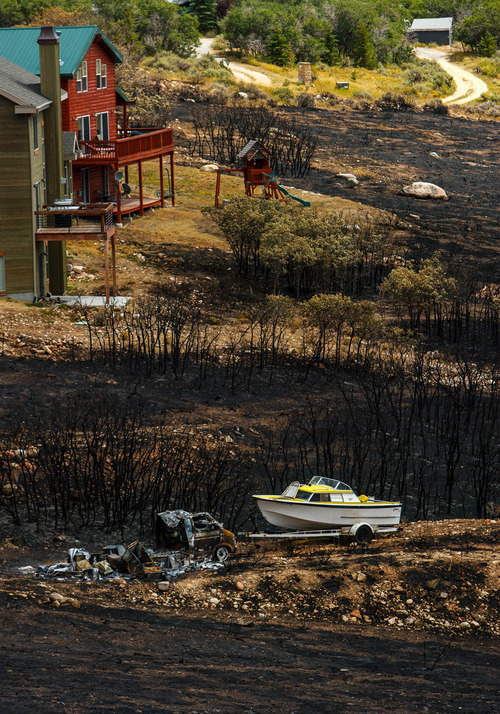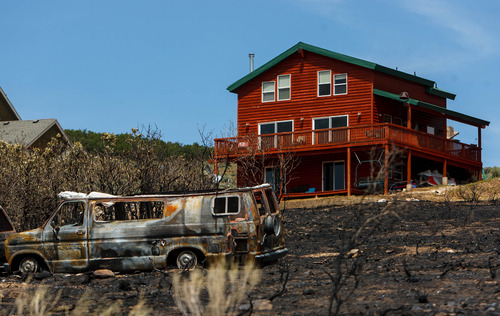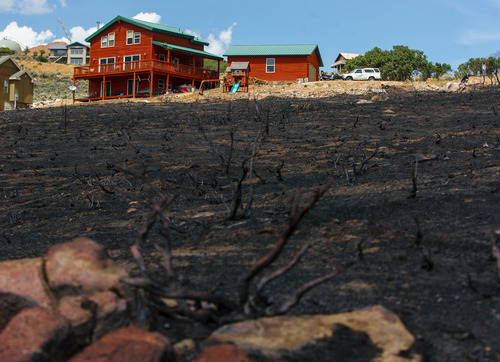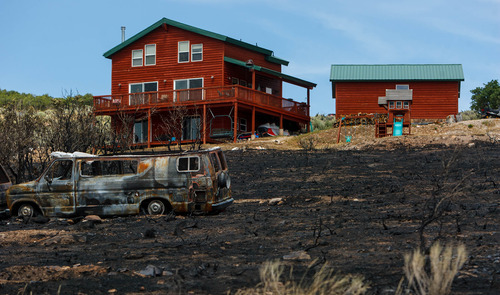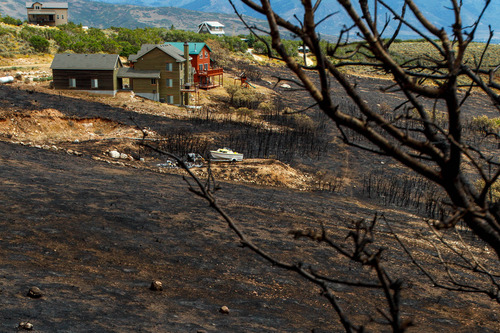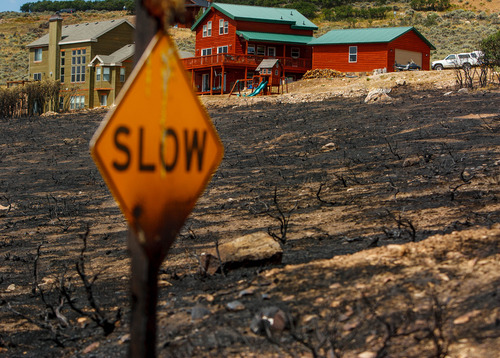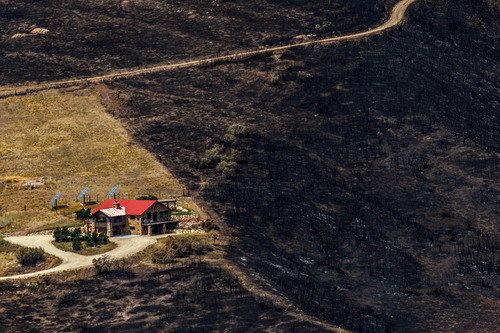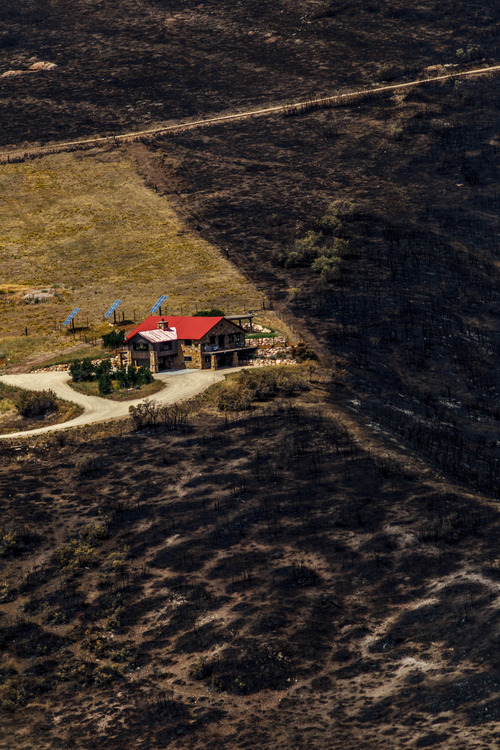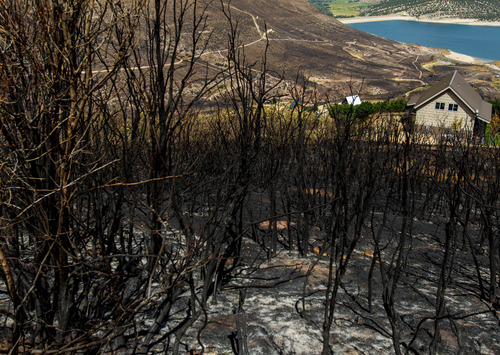This is an archived article that was published on sltrib.com in 2013, and information in the article may be outdated. It is provided only for personal research purposes and may not be reprinted.
None of the Summit County homeowners who implemented a recognized fire-mitigation landscaping strategy lost houses in the Rockport 5 Fire last week.
Eight homes were destroyed by the wildland blaze that was ignited by lightning near Rockport Reservoir.
Watching a wildfire leap toward a house, no doubt, is a hopeless feeling. But before the fire — or even the fire season — there are things homeowners can do that could make the difference between whether a structure burns or not. A lot depends on landscaping — or what fire officials call "fuels mitigation."
The national wildland fire mitigation program adopted by Utah in 2006 includes more than landscaping. But clearing a 30-foot zone of brush and trees around a structure dramatically increases its chances of surviving a wildfire, officials say.
According to the program, a second zone of 30 to 100 feet from a structure should be thinned of heavy brush and woods — including sage, grease wood and gambel oak, all common in Utah.
Those distances may vary depending on the landscape. For more information, visit firewise.org or contact local fire authorities.
"There is a large percentage of cases where fuels mitigation has saved homes," said Tyre Holfeltz, Utah Wildland-Urban Interface and Prevention coordinator. "But we can't guarantee that a home will survive a fire. There will always be fires with characteristics beyond our control."
Also important in mitigating wildfire damage is:
• Using fire-retardant building materials, particularly on roofs and siding.
• Keeping debris and clutter away from structures.
• Making sure roofs and rain gutters are cleared of dried leaves or pine needles.
Utah counties regulate the program that mandates fuels mitigation landscaping for new construction, Holfeltz said.
But such mitigation landscaping for existing structures is not mandated. It is suggested, however, on a voluntary basis, according to various county officials interviewed by The Tribune.
Following the Rockport 5 Fire, Summit County officials will consider if ongoing mitigation efforts should be mandated, said Kevin Calla-han, public works director.
"We're trying to figure out how far we've gotten with the voluntary mitigation," he said.
Some homeowner associations mandate the practice, Callahan added.
In many instances, insurance carriers demand the practice, but inspections are spotty, according to fire officials in several counties.
Rockport-area resident Alan Lindsley said Thursday that many homeowners in the area of the Summit County fire were busy clearing brush near their houses in the wake of the 2,000-acre blaze.
Fuels mitigation is an ongoing effort, he said, because native vegetation grows back into the defensible spaces created around structures.
A wildfire in New Harmony, Iron County, last year demonstrated the value of fuels mitigation and defensive landscaping, said Ryan Riddle, the state fire warden for Iron County.
That lightning-caused blaze destroyed seven homes and trailers and 22 out-buildings. But a similar number of structures did not burn where homeowners utilized mitigation landscaping, he said.
"Homeowners who live in fire-prone environments are at risk," Riddle said. "And it's up to them to take steps to protect their homes."
Wildfire mitigation
For more information on ways to help protect your house against wildfires, go online to firewise.org or call your local fire department.


